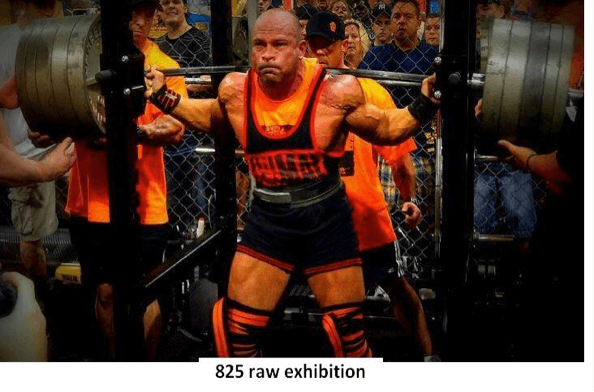What’s worse than someone who thinks science is worthless?
Someone who thinks it’s the best thing since sliced bread, but doesn’t understand it (including its limitations) whatsoever.
This post will NOT be as dry as the last one, so feel free to keep reading even if you aren’t a huge nerd.
PubMed will never replace the need for a strength coach. I think that someone can gain a lot from staying in the scientific literature, and especially by building a solid base in anatomy, physiology, and basic physics. However, if I was choosing a coach and had to pick between someone who knew every strength training study on PubMed, and someone who had been coaching athletes 20 years without knowing the first thing about science, I’d pick the latter every time.
Here’s why:
Irony Alert – we’re starting with a journal article: “Significant Strength Gains Observed in Rugby Players After Specific Resistance Exercise Protocols Based on Individual Salivary Testosterone Responses.” by Beaven et. Al (2008).
However, it is, I’m pretty sure, the most bonkers study in the history of sports science. And the implications are pretty huge.
Here’s what they did:
The researchers put a group of sixteen amateur rugby players (all of whom had at least 2 years of experience lifting) through workouts utilizing 4 different sets/reps/load/rest schemes, each separated by at least 2 days
1. 3 sets of 5 reps at 85% 1RM with 3 minutes of rest between sets
2. 4 sets of 10 reps at 70% 1RM with 2 minutes of rest between sets
3. 5 sets of 15 reps at 55% of 1RM with 1 minute of rest between sets
4. 4 sets of 5 reps at 40% of 1RM with 3 minutes of rest between sets
They assessed acute testosterone response – how much it rose or fell short term in response to each protocol.
Then they assigned half the people to train for 3 weeks with the protocol that caused the largest acute testosterone response, and assigned the other half to train for 3 weeks with the protocol that caused the worst acute testosterone response.
They used progress week to week – adding weight as able – to estimate changes in 1RM each week. I’ve been emailing the lead researcher, and he’s the first to admit that such an endeavor is inherently prone to error – especially with the 40% group, since 1RM had to be estimated based off changes in bar speed. However, they did retest maxes at the end of each 3 week block.
Then they retested the protocols to see how many people still had their best and worst acute testosterone response to the same protocols (all but 4 had the same best/worst acute responses).
Then they swapped groups. The people who trained with the protocol giving the best T response initially trained for 3 weeks with the protocol that produced the worst T response, and vice versa.
Then they retested maxes.
Before some of you jump down my throat about the fact that they used acute testosterone response to assign protocols, in spite of the fact that acute hormonal changes may not have as much of an effect on strength and hypertrophy as once thought, don’t worry. The researchers are the first to admit, “it does not prove that T(estosterone) is the effector,” but they do contend, “T can be used as a marker for selecting protocols to maximize functional gain.” Here’s why:
Results:
For the group that trained using the protocol that maximized testosterone (Tmax) response initially, they saw:
A ~7% increase in bench press strength, and a 9% increase in leg press strength on average…
Followed by a slight decrease in bench press strength, and a 4% decrease in leg press strength on average when they switched to the protocol that caused the worst acute T response (Tmin).
For the group that trained using the protocol that minimized testosterone response initially, they saw:
A ~3% decrease in bench press strength, and a 4% decrease in leg press strength on average…
Followed by a ~7% increase in bench press strength, and a 10% increase in leg press strength on average when they switched to the protocol that caused the best acute T response.
The interesting thing about this study is that the results don’t only show up when using averages. In the group that used the Tmax followed by Tmin protocol, every single athlete had significant increases in bench press, leg press, and body weight when using the Tmax protocol. When using the Tmin protocol, 6 of the 8 participants either got weaker or gained no strength on the bench press, and 7 of the 8 either got weaker or gained no strength on the leg press.
The same pattern held true for the group staring with the Tmin protocol. For the first three weeks, 6 of the 8 got weaker or gained no strength on the bench press, and 7 of the 8 eight either got weaker or gained no strength on the leg press. When they switched to their Tmax protocols, all of them had significantly better improvements on bench than on their Tmin protocol (though the way it’s worded in the study, I’m not entirely sure whether that means they all actually got stronger, or whether it just means they did better – i.e. perhaps gained no strength instead of losing strength), and all 8 of them got stronger on the leg press.
Interestingly, 3 of the 4 people who got stronger on bench using their Tmin protocol were actually people whose Tmax or Tmin protocol changed midway through the study, perhaps indicating they were able to respond positively to a broader array of stimuli than the others.
Weaknesses of the study:
-they used body weight rather than using MRIs as a crude way to approximate changes in muscle mass (however, they were mainly interested in strength changes, so that’s really no big deal – it’s not a hypertrophy study).
-They also didn’t report the actual 1RM values, only % change. Even though we know they had at least 2 years of training experience, they may still have not been very advanced trainees – without reported maxes, we don’t know.
-As was previously mentioned, if you look at the actual study, they report % changes week to week, which may be a little inappropriate since they were all projections – however, since they DID retest in between training blocks and at the end of the study, the week to week changes also aren’t all that important.
-Finally, each training block was only 3 weeks long. However, 7-10% average strength increases in just 3 weeks using the Tmax protocols is pretty substantial, especially since these guys had at least 2 years of lifting under their belts.

Takeaways:
Here’s where things get crazy. Two of the participants had their best acute T response to 4×5 at 40%, and their worst to 4×10 at 70%. If you pitted these two protocols against each other using groups of 30 lifters for each protocols, I absolutely promise you the average increases in the 4×10 at 70% group would be WAY more than the average increases in the 4×5 at 40% group. 4×5 at 40% is barely any work at all, and we all know more volume and more weight on the bar typically give better results, right?
Except (and I emailed the lead researcher to verify), the two individuals who had their best T response to 4×5 at 40% got stronger and gained mass on that protocol, and either got weaker or failed to improve with 4×10 at 70%.
Of course, that runs counter to everything in the scientific literature, except…
It doesn’t, because science looks at averages – it has to if you want to use statistics to establish significance. And it plays out in this study too. 7 or 8 people (including those whose testosterone-optimizing protocol shifted throughout the study) had their BEST response to 4×10 at 70%. So if you’re just looking at average responses to each protocol, for 4×5 at 40% you’re looking at 2 positive responses, but for 4×10 at 70% you’re looking at 7 or 8 positive responses – 4×10 at 70% almost certainly had a significantly better average response in this study.
In most studies, those two guys who got stronger with 40% but not with 70% are nothing but statistical noise.
And that’s the biggest reason why scientific knowledge without a strong experience base is of only marginal utility. Now, I think a strong knowledge base is going to help you glean more from your in-the-trenches experience, and help you generate better hypotheses in troubleshooting problems your athletes may have, but reading about science and talking about it on the internet leaves you with huge blind spots until you’ve spent time training hard and coaching athletes.
A good coach recognizes there are special snowflakes (the 40% guys in this study), and knows how to troubleshoot and try things out until they start seeing results. If you have the means to test acute T response in your athletes every time they’re in the gym, more power to you, but for most of us, that process still takes place using subjective feedback. That’s where the science trails off, and the art of coaching begins.
Physiology is great, but individuals often don’t fall into the neat little physiological models we like to use, or have their best results on a training program that, on average, produce great results. Individuals have different genetic makeups, different training histories, different preferences, different goals, and different stressors outside the gym. All those things contribute to how they respond to training. And many of them aren’t static factors either – they shift with changes in time and circumstance. If you could collect data about everything going on in someone’s life physically, socially, and psychologically, you MIGHT (though still probably not) be able to use a purely scientific approach to training. However, in the real world, to get the best possible outcomes, decisions need to factor in the science, past experience, and the situation of the individual.
Feel free to share. The fun thing about writing this is the fact that it is a study that can be used to shake the confidence of people who think they know everything just because they know what study to throw into any internet argument. At the end of the day, I’m a fan of science, but there’s no denying the necessity of learning by doing.



